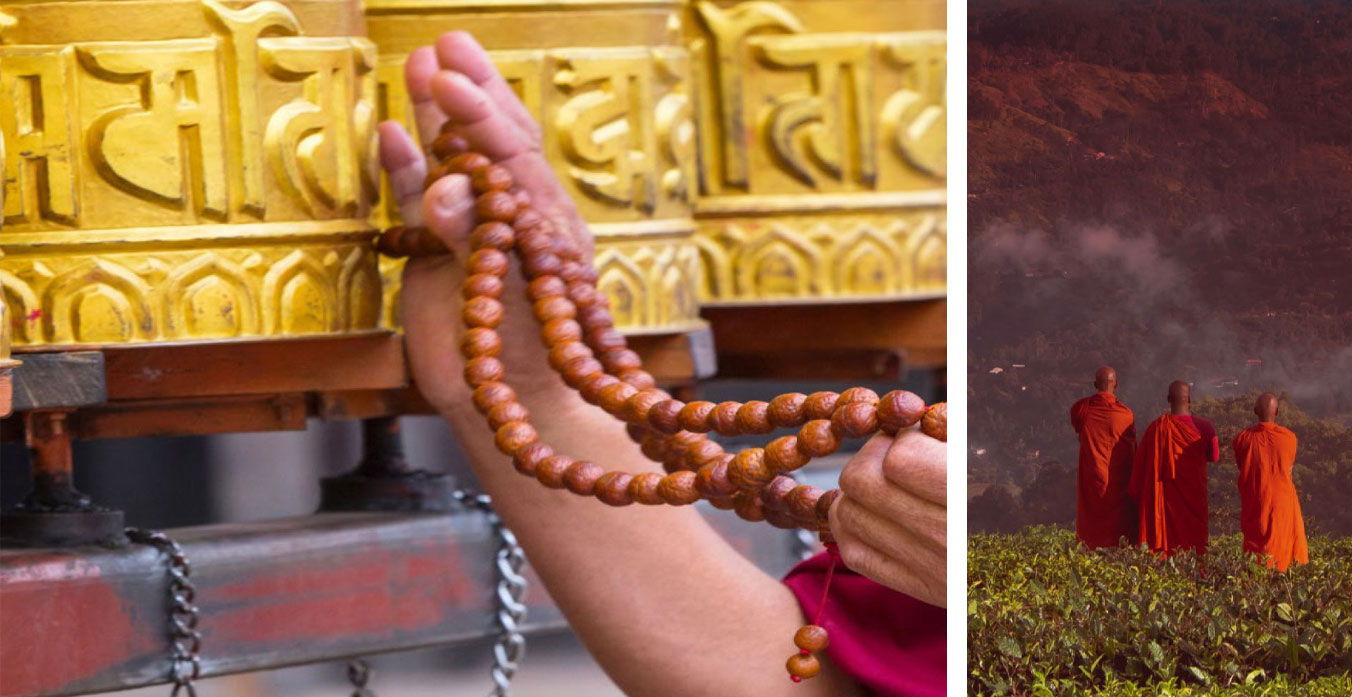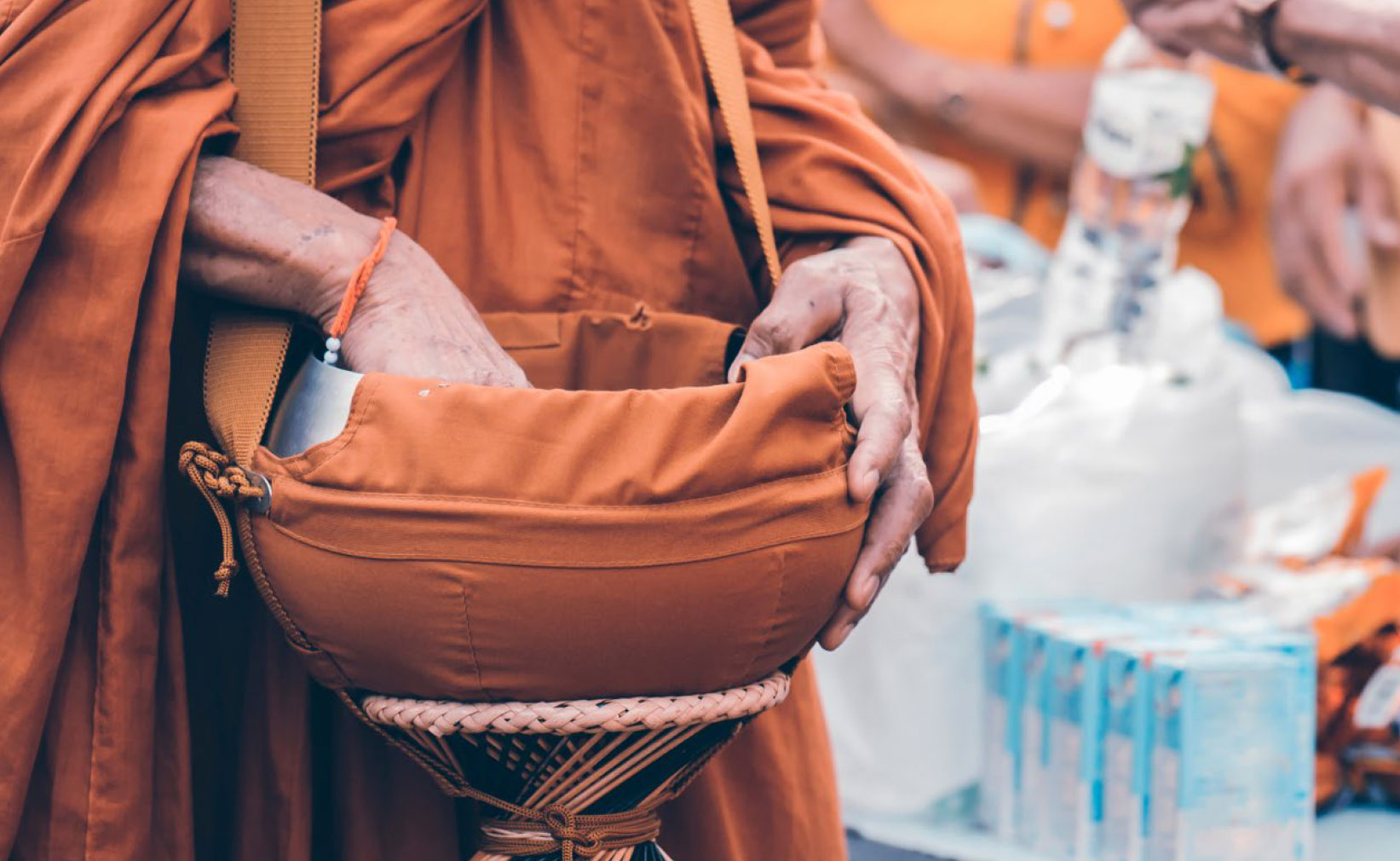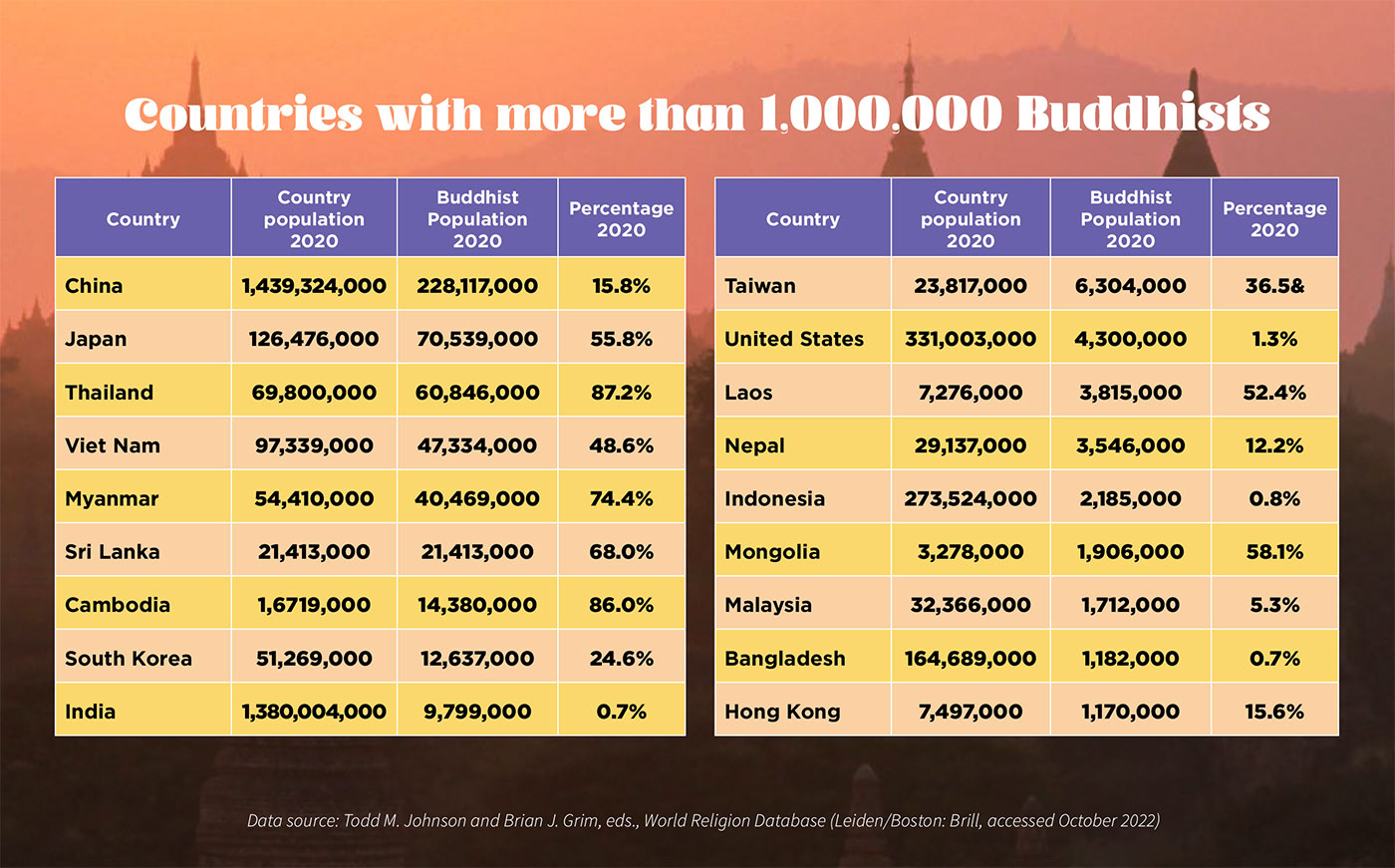
“Don’t burn out; keep yourselves fueled and aflame. Be alert servants of the Master, cheerfully expectant. Don’t quit in hard times; pray all the harder.” Romans 12:11-12 MSG Version
Tämä ensimmäisen vuosisadan varoitus apostoli Paavalilta olisi voitu yhtä helposti kirjoittaa tänään. Pandemian aiheuttaman kaaoksen, Ukrainan sodan, Lähi-idän uuden sodan, Jeesuksen seuraajien vainon suuressa osassa maailmaa ja taloudellisen taantuman vuoksi on helppo nostaa kätemme ja kysyä: "Mitä voi henkilö tekee?"
Paavali antaa meille vastauksen. Pysy keskittyneenä Jumalan sanaan odottaen, että Hän vastaa, ja "rukoile sitä kovemmin".
Tämän oppaan avulla kehotamme sinua rukoilemaan erityisesti, että Jumala tulisi tunnetuksi miljardille ihmiselle eri puolilla maailmaa, jotka ovat ainakin nimellisesti buddhalaisia. Joka päivä 21. tammikuuta 2024 alkaen opit jotain buddhalaisesta käytännöstä ja vaikutuksesta eri paikassa.
Tämä rukousopas käännetään 30 kielelle ja jaetaan yli 5000 rukousverkoston kautta maailmanlaajuisesti. Osallistut yli 100 miljoonan Jeesuksen seuraajan kanssa esirukoukseen buddhalaisten naapureidemme puolesta.
Monet päivittäisistä profiileista keskittyvät tiettyyn kaupunkiin. Tämä on tahallista. Kuvatut kaupungit ovat samoja kaupunkeja, joissa maanalaisen kirkon rukousryhmät palvelevat juuri sinä päivinä, jolloin rukoilet! Esirukouksesi heidän työssään etulinjassa on erittäin tärkeää.
Toivotamme sinut tervetulleeksi liittymään joukkoomme, pysymään "iloisena odottavana" ja "rukoilemaan sitä kovemmin".
Jeesus on Herra!

Prince Gautama was born in the southern part of modern-day Nepal in the sixth century BC. A local shaman noticed marks on the child’s body and foretold that he would grow up to be a world ruler and enlightened one. His father, desiring Gautama to be a great ruler, sought to protect him by providing a life of luxury.
At age 29, however, Gautama was exposed to the suffering outside the palace where he lived. As a result he spent six years as a wandering ascetic in search of a solution to the problem of suffering. In vain he tried various meditation techniques, hoping for insight. Finally, he resolved to sit beneath a bodhi tree until he had attained the enlightenment he sought. Though tempted by Mara (the Evil One), he persisted and eventually achieved what he believed to be a realization of supreme truth. From that point on he was considered to be the “Buddha”, which means an “Awakened One” or “Enlightened One”.
The Buddha found his original companions in the search for enlightenment and preached his first sermon to them. Unlike most religions there was no supreme deity involved. Instead he outlined the “Four Noble Truths”:
“Suffering” according to the Buddha arises due to our clinging to and craving for impermanent things that keeps us all caught in an ongoing process of death and rebirth where everything, even one’s very self, is impermanent and an illusion. The only way to get off that endless cycle of rebirths is to walk the “The Middle Path”, avoiding extremes and living with right understanding, thought, speech, conduct, livelihood, effort, mindfulness, and finally right concentration. The end-goal is not eternal communion with God, but rather—like the flame of a candle being extinguished—a state where craving is ended.
People see Buddhism as their own folk religion, even though it does not relate to a high deity. As such, it’s like a blanket that falls on existing cultures and conforms to the landscapes underneath. In Tibet, the Bon religion of shamanism was overlaid with Buddhist monasteries for meditation. In Buddhist Thailand, lay people offer monks cigarettes in their alms bowls; in Buddhist Bhutan, however, smoking is a sin. The Thai Buddhist council strictly disallows women’s ordination and forbids women from entering holy places inside temple grounds, yet Nepal and England ordain female monks. Cambodian Buddhists have no discussion in the temple concerning care for the environment, while Western Buddhists incorporate environmental activism into their practice of the dharma.
* For clarity, this guide follows the Sanskrit spelling of Buddhist terms, rather than the Pali spelling. Dharma is the Sanskrit spelling; the Pali spelling would be dhamma.

Theravada Buddhism
emerged from Sri Lanka, where the Buddha’s sermons and teachings were first canonized. It focuses on the attainment of enlightenment through personal meditation and good deeds. Myanmar, Thailand, Cambodia, and Laos follow this tradition.
Mahayana Buddhism
emerged based on texts attributed to Buddha, which taught that a bodhisattva, or enlightened being, could choose to delay entering nirvana (the ultimate spiritual goal of liberation) to deliver other sentient beings from their karmic suffering (based on a person’s past actions). This stream of Buddhism was traditionally practiced in China, Japan, Vietnam and the Korean peninsula.
Tibetan Buddhism
arose in India in AD sixth century, with a focus on accelerating enlightenment through ritual practices and visualizing heavenly bodhisattvas.
In recent years Westerners have adopted various forms of Buddhism that focus primarily on a quest for inner peace. Some have joined Theravada monasteries, seeking spiritual purification through meditation and by following the five basic rules of conduct. Others have committed themselves to a Tibetan lama (monk), study the Tibetan texts and learn chanting. Still others follow a Westernized form that mixes Asian traditions with Western notions of Buddhism. They often continue in their previous occupations and wear everyday clothes, but spend time in meditation and attend retreats.
In recent years Westerners have adopted various forms of Buddhism that focus primarily on a quest for inner peace. Some have joined Theravada monasteries, seeking spiritual purification through meditation and by following the five basic rules of conduct. Others have committed themselves to a Tibetan lama (monk), study the Tibetan texts and learn chanting. Still others follow a Westernized form that mixes Asian traditions with Western notions of Buddhism. They often continue in their previous occupations and wear everyday clothes, but spend time in meditation and attend retreats.


N/A


110 CITIES - IPC:n projekti a US 501(c)(3) No 85-3845307 | Lisätietoja | Sivuston tekijä: IPC MEDIA
110 CITIES - IPC:n projekti a US 501(c)(3) No 85-3845307 | Lisätietoja | Sivuston tekijä: IPC MEDIA